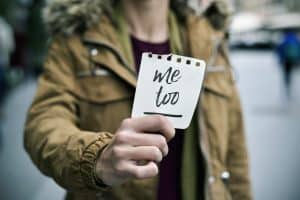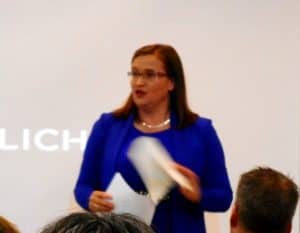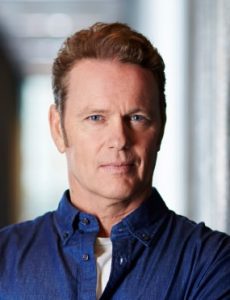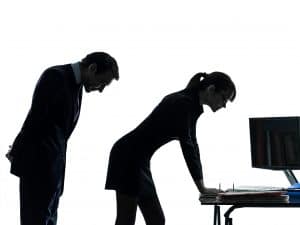 Being International Women’s Day, the media is awash with articles about pay rates, gender equality and sexual harassment. One of those articles is written by Sarah Ralph of Norton Rose Fullbright. Ralph provides a good summary of the current gender issues and recent media attention (may require registration but it’s free). She makes several recommendations for how to reduce the risk of sexual harassment and unwanted media attention. Below those recommendations are looked at from the occupational health and safety (OHS) perspective to see how OHS can help reduce the psychological harm. Continue reading “#MeToo, #TimesUp and #OHS”
Being International Women’s Day, the media is awash with articles about pay rates, gender equality and sexual harassment. One of those articles is written by Sarah Ralph of Norton Rose Fullbright. Ralph provides a good summary of the current gender issues and recent media attention (may require registration but it’s free). She makes several recommendations for how to reduce the risk of sexual harassment and unwanted media attention. Below those recommendations are looked at from the occupational health and safety (OHS) perspective to see how OHS can help reduce the psychological harm. Continue reading “#MeToo, #TimesUp and #OHS”
Category: harassment
How bad is workplace mental health and what can be done about it
 The recent RTW Forum in Melbourne had one speaker who analysed the workers compensation data for mental health claims. Dr Shannon Gray was able to draw some clear statements on workplace mental health from Australia’s national claims data and provide clues on what the workplace safety profession needs to do to reduce psychological harm.
The recent RTW Forum in Melbourne had one speaker who analysed the workers compensation data for mental health claims. Dr Shannon Gray was able to draw some clear statements on workplace mental health from Australia’s national claims data and provide clues on what the workplace safety profession needs to do to reduce psychological harm.
Gray and other speakers at the forum had access to a lot more data than has been available in the last few decades and they, rightly, continued to stress caution in analysis.
“so we know we’ve had laws, but why haven’t we had change?”
 Australia’s Sex Discrimination Commissioner, Kate Jenkins, has been prominent in recent seminars about sexual harassment, particularly in the entertainment industry. In February 2018, Jenkins spoke at a seminar in Melbourne hosted by Screen Producers Australia and provided strong advice on how businesses can control sexual harassment.
Australia’s Sex Discrimination Commissioner, Kate Jenkins, has been prominent in recent seminars about sexual harassment, particularly in the entertainment industry. In February 2018, Jenkins spoke at a seminar in Melbourne hosted by Screen Producers Australia and provided strong advice on how businesses can control sexual harassment.
Jenkins began her presentation with an uncomfortable reminder that business has been lax in addressing unlawful workplace behaviour.
Two new audio readings
Several past SafetyAtWorkBlog articles have been posted in SoundCloud as audio files. One article is a reading of two articles from last year about Queensland’s industrial manslaughter laws.
The other reminds us that sexual harassment and sexual assault did not appear in relation to Harvey Weinstein accusations. The Australian Human Rights Commission report into sexual assault on university campuses provides an additional context to sexual harassment and workplace health and safety.
Both articles are also available below:
Industrial Manslaughter
Sexual Assault in Universities
Commenters split on who manages sexual harassment
 A recent SafetyAtWorkBlog article promoted in LinkedIn has generated many responses, mostly from people who have not read the whole original article, about whether sexual harassment is or is not an occupational health and safety (OHS) matter. Below is a summary of some of those comments. Continue reading “Commenters split on who manages sexual harassment”
A recent SafetyAtWorkBlog article promoted in LinkedIn has generated many responses, mostly from people who have not read the whole original article, about whether sexual harassment is or is not an occupational health and safety (OHS) matter. Below is a summary of some of those comments. Continue reading “Commenters split on who manages sexual harassment”
McLachlan accusations place more focus on the OHS of sexual harassment
 Prominent Australian actor, Craig McLachlan, has been accused of indecent assault by cast members of the Rocky Horror Show, according to the Australian Broadcasting Corporation (ABC) and Fairfax media (paywalled). One actress, Erika Heynatz, has identified this behaviour as a workplace safety issue:
Prominent Australian actor, Craig McLachlan, has been accused of indecent assault by cast members of the Rocky Horror Show, according to the Australian Broadcasting Corporation (ABC) and Fairfax media (paywalled). One actress, Erika Heynatz, has identified this behaviour as a workplace safety issue:
“Heynatz went immediately to the head mechanic, whose job it was to ensure safety. She recalled that he was laughing “uncomfortably”. But she told him that McLachlan had to be spoken to, that this was a safety issue.”
Articles in both media outlets relate the anguish that actors felt after the alleged events and how this affected their work performance. Continue reading “McLachlan accusations place more focus on the OHS of sexual harassment”
Sexual harassment may be an OHS issue but what priority should it receive?
 One online news site in Australia has suggested that sexual harassment is an occupational health and safety (OHS) issue. At first blush, it should be. Sexual harassment can create mental ill-health and can certainly be harmful. But from the early days of discussions about workplace bullying and occupational violence in Australia, sexual harassment has been consciously excluded from OHS.
One online news site in Australia has suggested that sexual harassment is an occupational health and safety (OHS) issue. At first blush, it should be. Sexual harassment can create mental ill-health and can certainly be harmful. But from the early days of discussions about workplace bullying and occupational violence in Australia, sexual harassment has been consciously excluded from OHS.
Is It or Isn’t It?
Some of the best discussion on bullying, harassment and violence was written by Dr Clare Mayhew for the Australian Institute of Criminology in 2000. These included a practical handbook on prevention. (It’s peculiar that some of the most perceptive works on OHS occur outside the OHS profession. Well perhaps not so surprising.) In the handbook, Mayhew points out that harassment has always been an element of workplace bullying but excludes sexual harassment from her discussion:
“The Australian Institution of Criminology believes that prevention, rather than post-incident reaction, is the key to improved outcomes. However, the handbook needs to be adapted specifically to each organisation for best results. The discussions exclude activity that could be described as sexual harassment, which is extensively dealt with elsewhere.” (page 1)
This position is reflective of the OHS literature yet, on reflection, this position may have been wrong for it contributed to a fractured approach to managing workplace psychosocial hazards.
